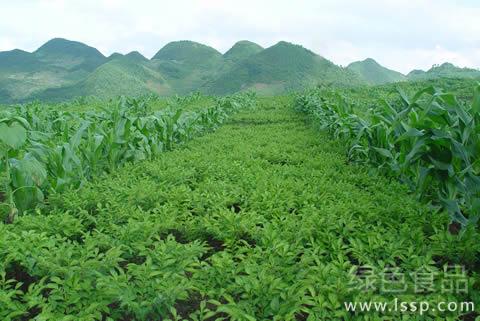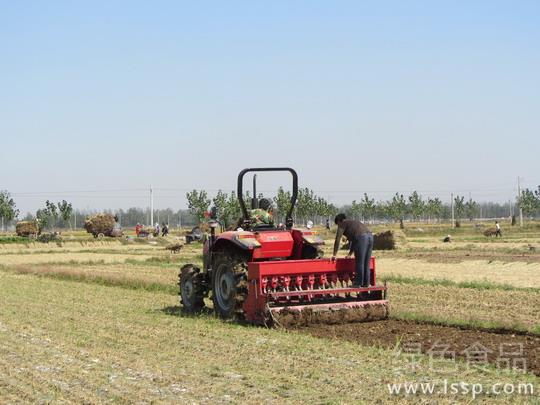Management method of winter ploughing in cotton field to eliminate overwintering cotton bollworm

Winter tillage
Ploughing in winter is not only an important measure to increase cotton production, but also an effective way to eliminate overwintering cotton bollworm. In winter, insect pupae, red spiders, aphids and some underground pests are overwintered in the field. In winter, ploughing the soil will expose pests, kidneys and eggs to the air and freeze them to death without using any pesticides, and effectively reduce the occurrence base of insect pests in the following year, which is a good method for pollution-free control of insect pests.
Winter tillage has a variety of killing effects on cotton bollworm.
① destroys the pupa chamber, changes the natural state of the pupa, and reduces the emergence rate of the next spring.
② turns part of the pupae to the surface, causing them to dry, freeze to death or be pecked by natural enemies.
③ turned part of the pupae into the deep soil, so that they could not be normally feathered and suffocated, thus reducing the source of overwintering insects.
Technical requirements for ploughing in winter:
1. Winter ploughing range. The overwintering sites of cotton bollworm are mainly in cotton fields and can also be overwintered in dry land. Rice borer, such as Chilo suppressalis and Chilo suppressalis, overwintered in rice roots, and aphids, red spiders and eggs overwintered in winter fallow fields and grass. Therefore, winter ploughing and pest control must be carried out on a large scale in order to be effective, and the best way is to go to several villages and within a township or town, ploughing all the idle cotton fields, cotton fields, rice planter fields, wheat fields, and orchard blank fields, so as to destroy the overwintering places for all kinds of pupae, adults and eggs.
2. Winter ploughing time. The effect of winter tillage is to destroy the living environment of all kinds of insect pests, turn some insect pests into the deep soil, so that they can not survive normally, live and suffocate, or turn to the surface to dry or freeze to death by cold and low temperature. Therefore, the earlier the winter ploughing, the higher the mortality of insect pests in various insect states, because the temperature is low and the air is dry, all kinds of insect pests will die because of a large amount of water loss or freezing. The temperature is the lowest from the end of December to early February every year, which is a period of great threat to all kinds of insect pests, and the pest control effect is good. It should be carried out immediately after the previous crop harvest and finished ploughing before the ground is frozen (the permafrost layer is more than 5 cm), so as to prolong the weathering time, improve the pest control effect, and help to accept more rain and snow. When the land is frozen and ploughed, it is not only difficult to cultivate, the quality of cultivated land is declining, but also the effect of killing insects is poor.
3. Winter ploughing method. Winter ploughing, the depth should be more than 10 cm, the deeper the winter ploughing, the better the pest control effect, but it can not be ploughed too deep, otherwise it is easy to lead to soil water loss, winter ploughing first rough rake, and then fine rake broken, in order to store water and moisture, improve soil water holding capacity; conditional ploughing can be done 2-3 times, ploughing once every 12-15 days, at the same time in the process of ploughing and raking can also kill more overwintering pests, the effect of pest control is better.
4. Irrigation after ploughing. In cold winter, pests are more resistant to drought but not to moisture and freezing. According to the research of relevant units, when the relative water holding capacity of soil is 40%, the mortality rate of pests in various insect states is 36.6%. When the soil water holding capacity is saturated, the mortality rate of insect pests in various insect states is more than 80%, and some can reach 100%, such as cotton bollworm pupae, cabbage worm pupae, etc., so wherever irrigation conditions are available. Winter irrigation or spring irrigation can be followed by winter tillage, which can significantly increase the mortality of overwintering pests in soil.
- Prev

Sowing and cultivation techniques of konjac with strong adaptability and high economic benefit
Sowing and cultivation techniques of konjac with strong adaptability and high economic benefit
- Next

Time-saving, labor-saving and income-increasing wheat "no-tillage sowing" technology
Time-saving, labor-saving and income-increasing wheat "no-tillage sowing" technology
Related
- Fuxing push coffee new agricultural production and marketing class: lack of small-scale processing plants
- Jujube rice field leisure farm deep ploughing Yilan for five years to create a space for organic food and play
- Nongyu Farm-A trial of organic papaya for brave women with advanced technology
- Four points for attention in the prevention and control of diseases and insect pests of edible fungi
- How to add nutrient solution to Edible Fungi
- Is there any good way to control edible fungus mites?
- Open Inoculation Technology of Edible Fungi
- Is there any clever way to use fertilizer for edible fungus in winter?
- What agents are used to kill the pathogens of edible fungi in the mushroom shed?
- Rapid drying of Edible Fungi

